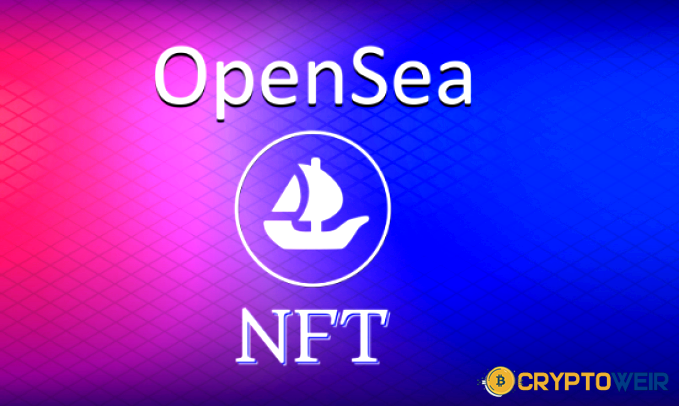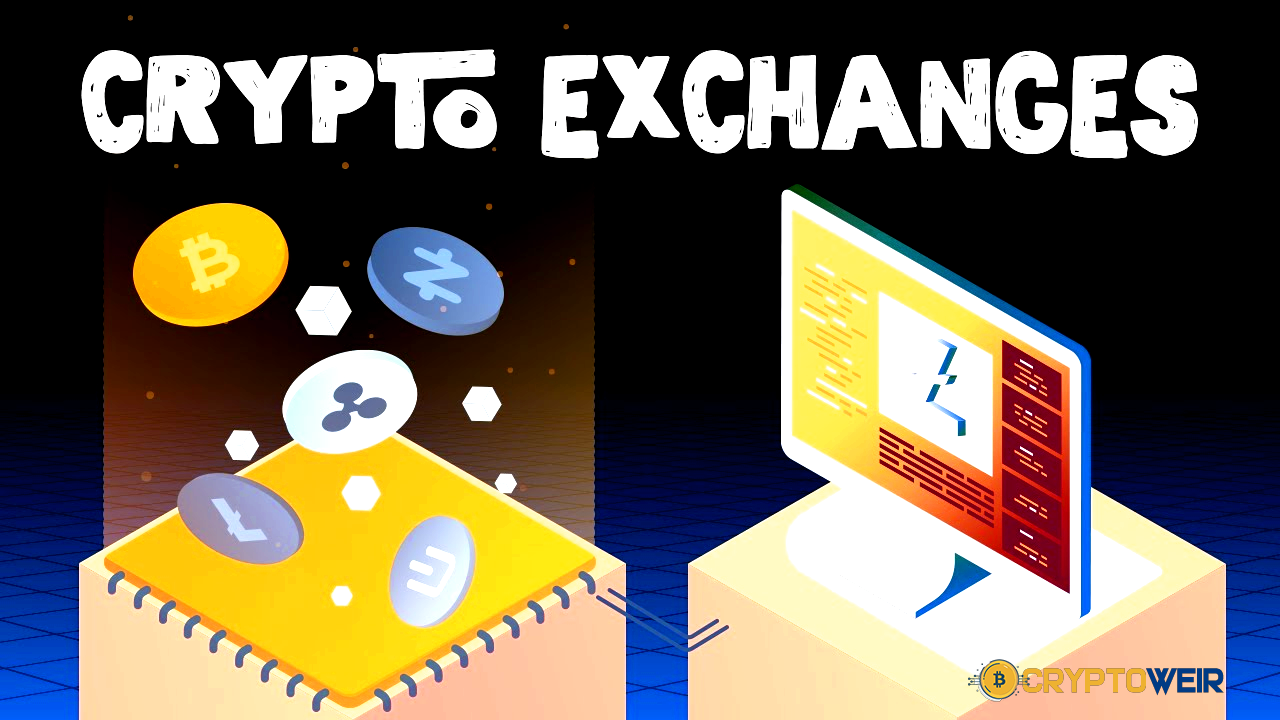Top 10 Cryptocurrency Technology News Explained for Beginners

The world of digital finance is evolving at breakneck speed, and staying informed about the latest developments can feel overwhelming. Whether you’re a seasoned investor, curious newcomer, or tech enthusiast, having cryptocurrency technology news explained in clear, understandable terms is essential for navigating this complex landscape. From groundbreaking blockchain innovations to regulatory shifts that reshape entire markets, crypto technology news impacts millions of users worldwide daily. This comprehensive guide breaks down the most significant technological advances, explains complex concepts in simple language, and provides you with the tools to interpret crypto tech developments like a pro.
In today’s fast-paced digital economy, understanding how cryptocurrency technology news affects your investments, career prospects, and the broader financial ecosystem has never been more critical. Let’s dive deep into the fascinating world of crypto technology and decode the headlines that matter most.
Understanding Cryptocurrency Technology Fundamentals
What Makes Crypto Technology News So Important?
Cryptocurrency technology represents the backbone of a trillion-dollar industry that’s reshaping how we think about money, contracts, and digital ownership. When we have cryptocurrency technology news explained, it becomes clear that these aren’t just speculative assets—they’re revolutionary technologies with real-world applications.
The blockchain technology underlying cryptocurrencies has introduced concepts like decentralization, immutability, and programmable money. These innovations extend far beyond simple peer-to-peer transactions, encompassing smart contracts, decentralized finance (DeFi), non-fungible tokens (NFTs), and enterprise blockchain solutions.
Understanding crypto technology news helps investors make informed decisions, developers stay current with emerging protocols, and businesses evaluate blockchain integration opportunities. The technology evolves so rapidly that yesterday’s breakthrough can become today’s standard practice.
Key Blockchain Innovations Shaping 2025
The cryptocurrency landscape in 2025 is dominated by several technological breakthroughs that address scalability, sustainability, and usability challenges. Layer 2 scaling solutions like Ethereum’s Optimism and Arbitrum have revolutionized transaction throughput, reducing fees from hundreds of dollars to mere cents.
Proof-of-Stake consensus mechanisms have largely replaced energy-intensive Proof-of-Work systems, with Ethereum’s successful transition serving as a blueprint for other networks. This shift has reduced the cryptocurrency industry’s carbon footprint by over 90% while maintaining security standards.
Interoperability protocols now enable seamless communication between different blockchain networks, creating a more connected ecosystem. Cross-chain bridges, atomic swaps, and multi-chain protocols have eliminated the isolation that previously plagued individual blockchains.
Decentralized Finance (DeFi) Technology Developments
Revolutionary DeFi Protocols and Their Impact
Decentralized Finance has emerged as one of the most significant applications of cryptocurrency technology, with total value locked (TVL) exceeding $200 billion in 2025. DeFi protocols eliminate traditional financial intermediaries, enabling users to lend, borrow, trade, and earn yields directly through smart contracts.
Automated Market Makers (AMMs) have evolved beyond simple token swaps to include advanced features like concentrated liquidity, dynamic fees, and impermanent loss protection. These innovations have made DeFi more capital-efficient and user-friendly than ever before.
Yield farming strategies have become increasingly sophisticated, with protocols offering complex instruments like options, futures, and structured products. However, these developments also introduce new risk factors that users must carefully evaluate.
Also, More: Daily Bitcoin News Update,s Trading Signals Guide 2025
Smart Contract Security and Auditing Advances
The DeFi space has witnessed significant improvements in smart contract security following high-profile hacks that cost users billions in previous years. Formal verification methods, automated testing frameworks, and continuous monitoring systems have become industry standards.
Bug bounty programs now offer millions in rewards for discovering vulnerabilities, creating powerful incentives for white-hat hackers to improve protocol security. Multi-signature wallets and time-locked upgrades provide additional safeguards against malicious activities.
Insurance protocols have emerged to protect DeFi users against smart contract failures, oracle manipulation, and other technical risks. These platforms use decentralized risk assessment models and community governance to determine coverage terms and pricing.
Cryptocurrency Technology News Explained: Enterprise Adoption
Corporate Blockchain Integration Trends
Major corporations are increasingly integrating blockchain technology into their operations, moving beyond experimental pilots to production-ready implementations. Supply chain transparency, digital identity management, and automated compliance have become primary use cases for enterprise blockchain adoption.
Fortune 500 companies are exploring the integration of Central Bank Digital Currencies (CBDCs), preparing for a future where digital national currencies become mainstream payment methods. This preparation involves upgrading payment systems, training staff, and ensuring regulatory compliance.
Tokenization of real-world assets has gained significant traction, with everything from real estate to artwork being converted into blockchain-based tokens. This trend democratizes access to traditionally illiquid investments and creates new revenue streams for asset owners.
Regulatory Technology (RegTech) Developments
Regulatory compliance in the cryptocurrency space has become increasingly sophisticated, with AI-powered solutions automatically monitoring transactions for suspicious activities. These systems help exchanges and DeFi protocols maintain compliance while preserving user privacy.
Know Your Customer (KYC) and Anti-Money Laundering (AML) procedures have evolved to include privacy-preserving identity verification methods. Zero-knowledge proofs and selective disclosure techniques allow users to prove their identity without revealing unnecessary personal information.
Regulatory sandboxes in various jurisdictions provide controlled environments for testing innovative cryptocurrency technologies while ensuring consumer protection. These frameworks have accelerated the development of compliant crypto solutions.
Emerging Consensus Mechanisms and Scalability Solutions
Next-Generation Consensus Algorithms
Beyond Proof-of-Work and Proof-of-Stake, innovative consensus mechanisms are addressing specific blockchain challenges. Proof-of-History, Delegated Proof-of-Stake, and Practical Byzantine Fault Tolerance variants offer different trade-offs between security, scalability, and decentralization.
Directed Acyclic Graph (DAG) structures have emerged as alternatives to traditional blockchain architecture, enabling parallel transaction processing and eliminating the need for miners or validators in some implementations.
Quantum-resistant cryptographic algorithms are being integrated into blockchain protocols to protect against future quantum computing threats. These preemptive measures ensure long-term security as quantum technology advances.
Layer 2 and Sharding Technologies
Layer 2 scaling solutions have matured significantly, with rollup technologies processing thousands of transactions per second while maintaining the security guarantees of their underlying blockchains. Optimistic rollups and zk-rollups represent different approaches to achieving scalability without compromising decentralization.
Sharding implementations divide blockchain networks into smaller, parallel chains that can process transactions simultaneously. Ethereum 2.0’s beacon chain coordinates multiple shard chains, dramatically increasing network capacity.
State channels and payment channels enable off-chain transactions between parties, with periodic settlement on the main blockchain. These solutions are particularly valuable for micropayments and high-frequency trading applications.
Privacy and Security Innovations in Crypto Technology
Advanced Cryptographic Techniques
Zero-knowledge proofs have revolutionized privacy in blockchain applications, allowing users to prove information validity without revealing the information itself. Zk-SNARKs and zk-STARKs enable private transactions while maintaining network transparency.
Homomorphic encryption permits computations on encrypted data without decrypting it first, enabling privacy-preserving smart contracts and secure data analysis. This technology has significant implications for financial services and healthcare applications.
Multi-party computation protocols allow multiple parties to jointly compute functions over their inputs while keeping those inputs private. These techniques enable collaborative blockchain applications without compromising individual privacy.
Hardware Security Module Integration
Hardware wallets have evolved beyond simple storage devices to include advanced features like multi-signature support, intelligent contract interaction, and biometric authentication. These improvements enhance security while maintaining user convenience.
Trusted Execution Environments (TEEs) provide secure enclaves for executing sensitive blockchain operations, protecting against both software and hardware attacks. Intel SGX and ARM TrustZone technologies are being integrated into various cryptocurrency applications.
Exchanges and institutional custody providers increasingly use Hardware Security Modules (HSMs) to secure private keys and execute cryptographic operations. FIPS 140-2 Level 4 certification ensures the highest security standards for these devices.
Non-Fungible Tokens (NFTs) and Digital Ownership Evolution
Beyond Digital Art: Utility NFTs
NFT technology has expanded far beyond digital collectibles to include practical applications like digital identity, credentials verification, and access control. Universities issue diploma NFTs, while event organizers use them for ticket authentication and resale prevention.
Gaming NFTs represent in-game assets that players truly own and can transfer between different games and platforms. This interoperability creates new economic models for game developers and enhanced experiences for players.
Real estate NFTs enable fractional ownership of physical properties, allowing investors to buy and sell shares of buildings through blockchain transactions. This application democratizes real estate investment and increases market liquidity.
NFT Metadata and Storage Solutions
Decentralized storage solutions like IPFS and Arweave ensure that NFT metadata and associated files remain accessible indefinitely, addressing concerns about centralized storage failures. These platforms use redundancy and economic incentives to maintain data availability.
Dynamic NFTs can change their properties based on external conditions or user interactions, creating more engaging and functional digital assets. Smart contracts govern these changes according to predefined rules and conditions.
NFT royalty mechanisms ensure that creators continue earning from secondary sales of their works, providing sustainable income streams for artists and content creators. These systems are enforced automatically through smart contracts.
Central Bank Digital Currencies (CBDCs) Technology
CBDC Implementation Architectures
Cryptocurrency Technology News Explained: Central banks worldwide are exploring different technical approaches to digital currency implementation, ranging from blockchain-based systems to traditional database architectures with cryptographic enhancements. The choice depends on factors like scalability requirements, privacy concerns, and existing financial infrastructure.
Cryptocurrency Technology News Explained: Retail CBDCs designed for public use face different technical challenges than wholesale CBDCs intended for interbank settlements. Retail systems must handle millions of small transactions while maintaining user privacy and preventing money laundering.
Offline payment capabilities are being developed to ensure CBDC functionality during network outages or in areas with poor internet connectivity. These systems use cryptographic techniques to prevent double-spending without real-time network verification.
Privacy and Surveillance Considerations
CBDC designs must balance privacy protection with regulatory compliance and law enforcement needs. Some implementations propose tiered privacy systems where small transactions remain anonymous while larger amounts require identity verification.
Programmable money features allow CBDCs to include built-in compliance rules, automatic tax collection, and spending restrictions for government transfers. However, these capabilities raise concerns about financial surveillance and individual autonomy.
Cross-border CBDC systems require international cooperation and standardization to enable seamless transactions between different digital currencies. Pilot programs are exploring technical and regulatory frameworks for CBDC interoperability.
Artificial Intelligence Integration in Cryptocurrency
AI-Powered Trading and Analytics
Machine learning algorithms are revolutionizing cryptocurrency trading through automated strategy execution, sentiment analysis, and risk management. These systems process vast amounts of market data, news, and social media information to identify trading opportunities.
Predictive analytics models help investors forecast price movements, identify market trends, and optimize portfolio allocation. However, the volatile nature of cryptocurrency markets makes accurate predictions extremely challenging, even for advanced AI systems.
Natural Language Processing (NLP) technologies analyze news articles, social media posts, and regulatory announcements to gauge market sentiment and predict price movements. These insights help traders make more informed decisions.
Automated Smart Contract Development
AI tools are beginning to assist developers in writing, testing, and auditing smart contracts, potentially reducing bugs and security vulnerabilities. These systems can suggest optimizations, identify common attack vectors, and generate test cases.
Code generation models trained on existing smart contracts can help developers prototype new applications more quickly. However, human oversight remains essential to ensure security and correctness.
Automated formal verification tools use AI to mathematically prove smart contract properties mathematically, providing higher assurance of correctness than traditional testing methods. These tools are becoming increasingly crucial for high-value DeFi protocols.
Quantum Computing Implications for Cryptocurrency
Quantum Threat Assessment
Cryptocurrency Technology News Explained: Quantum computers pose a significant long-term threat to current cryptographic systems used in blockchain networks. Shor’s algorithm could potentially break the elliptic curve cryptography that secures most cryptocurrency wallets and transactions.
Cryptocurrency Technology News Explained: The timeline for quantum computers capable of breaking cryptocurrency encryption remains uncertain, with estimates ranging from 10 to 30 years. However, the “Y2Q” (Years to Quantum) countdown has prompted proactive security measures.
Cryptocurrency Technology News Explained: Migration to quantum-resistant cryptographic algorithms requires careful planning to ensure backward compatibility and network security during the transition period. Some blockchain projects are already implementing post-quantum cryptography.
Post-Quantum Cryptography Solutions
Cryptocurrency Technology News Explained: Lattice-based, hash-based, and multivariate cryptographic schemes offer potential quantum resistance while maintaining reasonable performance characteristics. NIST’s post-quantum cryptography standardization process guides algorithm selection.
Cryptocurrency Technology News Explained: Quantum key distribution (QKD) systems could provide unconditional security for high-value blockchain transactions, though current implementations have distance and scalability limitations.
Cryptocurrency Technology News Explained: Hybrid approaches combining classical and quantum-resistant algorithms provide defense-in-depth against both current and future threats while minimizing performance impacts during the transition period.
Environmental Sustainability in Crypto Technology
Green Blockchain Initiatives
Cryptocurrency Technology News Explained: Proof-of-Stake consensus mechanisms have dramatically reduced the energy consumption of major blockchain networks, with Ethereum’s transition eliminating approximately 99.95% of its previous energy usage.
Cryptocurrency Technology News Explained: Carbon-neutral and carbon-negative blockchain projects are emerging, using renewable energy sources and carbon offset mechanisms to minimize environmental impact. Some networks even contribute to environmental conservation efforts.
Cryptocurrency Technology News Explained: Energy-efficient algorithm design focuses on reducing computational requirements while maintaining security properties. Techniques like sharding, state pruning, and optimized data structures contribute to lower energy consumption.
Sustainable Mining Practices
Cryptocurrency Technology News Explained: Bitcoin mining operations are increasingly powered by renewable energy sources, including solar, wind, and hydroelectric power. Mining companies are also utilizing stranded energy sources that would otherwise be wasted.
Cryptocurrency Technology News Explained: Heat recovery systems capture waste heat from mining operations for practical applications like greenhouse heating, residential warming, and industrial processes. These systems improve overall energy efficiency.
Cryptocurrency Technology News Explained: Mining pool cooperation in load balancing helps stabilize electrical grids by adjusting power consumption based on renewable energy availability and grid demand. This flexibility benefits both miners and utility companies.
Future Trends and Predictions
Emerging Technologies on the Horizon Cryptocurrency Technology News Explained: Decentralized Autonomous Organizations (DAOs) are evolving into sophisticated governance systems that can manage complex operations, allocate resources, and make strategic decisions through token-holder voting.
Cryptocurrency Technology News Explained: Metaverse integration with blockchain technology is creating new economic models for virtual worlds, digital real estate, and avatar-based experiences. These platforms combine gaming, social interaction, and economic activity.
Cryptocurrency Technology News Explained: Internet of Things (IoT) integration enables smart devices to transact autonomously using cryptocurrency micropayments, creating new business models for device-to-device commerce and automated service payments.
Technology Convergence Opportunities
The intersection of artificial intelligence, blockchain, and Internet of Things technologies is creating unprecedented opportunities for automation, transparency, and decentralized coordination of complex systems.
Augmented and virtual reality platforms are beginning to integrate cryptocurrency payments and NFT-based digital assets, creating immersive economic experiences that blur the line between physical and digital commerce.
Biotechnology and blockchain convergence could revolutionize healthcare data management, pharmaceutical supply chains, and personalized medicine through secure, patient-controlled health records.
Conclusion
Cryptocurrency Technology News Explained: Understanding cryptocurrency technology news doesn’t have to be overwhelming when you have the right framework for interpretation. From DeFi innovations and NFT utilities to quantum computing threats and environmental sustainability solutions, the crypto technology landscape continues evolving at an unprecedented pace.
Cryptocurrency Technology News Explained: Staying informed about these developments empowers you to make better investment decisions, identify emerging opportunities, and understand how blockchain technology impacts various industries. As we’ve seen throughout this guide, having cryptocurrency technology news explained in accessible terms is crucial for navigating this complex but fascinating ecosystem.
FAQS
Q: How can I stay updated with reliable cryptocurrency technology news?
A: Cryptocurrency Technology News Explained: Follow reputable sources like CoinDesk, Cointelegraph, and official project blogs. Join developer communities on GitHub and Discord, and subscribe to newsletters from established blockchain research firms. Always verify information through multiple sources before making decisions.
Q: What’s the difference between Layer 1 and Layer 2 blockchain technologies?
A: Cryptocurrency Technology News Explained: Layer 1 refers to the base blockchain protocol (like Bitcoin or Ethereum), while Layer 2 solutions are built on top to improve scalability and functionality. Layer 2 examples include the Lightning Network for Bitcoin and Optimism for Ethereum, which process transactions faster and at lower costs.
Q: Are NFTs just digital art, or do they have other technological applications?
A: Cryptocurrency Technology News Explained: NFTs extend far beyond digital art to include utility applications like digital identity verification, gaming assets, event tickets, academic credentials, and fractional real estate ownership. The technology enables provable digital ownership and programmable rights management.
Q: How do I evaluate the security of new cryptocurrency technologies?
A: Cryptocurrency Technology News Explained: Look for formal security audits by reputable firms, check if the code is open-source and regularly updated, assess the development team’s track record, and review the project’s bug bounty programs. Never invest more than you can afford to lose in experimental technologies.
Q: What role will central bank digital currencies play in the crypto ecosystem?
A: Cryptocurrency Technology News Explained: CBDCs will likely coexist with cryptocurrencies, providing government-backed digital payment options while potentially increasing overall crypto adoption. They may offer more regulatory clarity and integration with traditional financial systems, but will have different privacy and decentralization characteristics.











